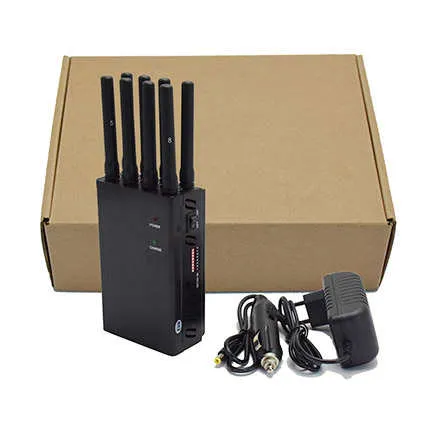Signal Jamming: An Emerging Technology Trend
Deploying Russian Krasukha-4 electronic warfare kit at Latakia Airport
The Syrian crisis provides Russians with the opportunity to showcase military equipment on an unprecedented scale. It has also deployed the most modern Krasukha-4 jammer system at Latakia Airport in Syria, which is a base for the Russian Air Force to combat Syrian rebels. It can be said that the use of this advanced equipment is not to defeat the Syrian rebels, but to demonstrate its niche capabilities in Russia's world leading field. Krasuka-4 plays a role at the forefront of technology. It is a mobile ground based signal blocker that can interfere with the surveillance radar, AWACS radar, surveillance radar, and gps jamming/guidance system on LEO military satellites such as the Lacrosse/Oynx series in the United States. In fact, it can create a 300 kilometer invisible dome where friendly forces can operate without punishment. Some people attribute the success of the Russian Air Force in Syria to this equipment, including the fact that it effectively interferes with NATO surveillance.

For laymen, jammers are synonymous with electronic warfare. It is undoubtedly the most prominent component of electronic warfare. Modern jammers are very different from their cousins who have been around for ten years. Krasukha-4 or Türkiye KORAL ground jammer and other equipment can produce very high power output in broadband, with an effective distance of 300 km; Compared to the previous generation of gsm signal jammer with limited range and effectiveness in broadband interference mode, there has been a significant leap forward. Some reports also indicate that Russian communication suppression stations such as Murmansk BN can interfere with approximately 20 point frequencies within a range of up to 5000 kilometers. To achieve these high ranges, the jammer is no longer limited to line of sight mode and even uses reflected signals from the ionosphere. These high-power jammers based on high mobility trucks with built-in generators have shooting and rapid movement capabilities. This mobility was feasible in early low-power independent jammers. Future jammers may be consumables (including air drops) and installed on unmanned ground vehicles.
Due to miniaturization and better electromagnetic interference management, electronic warfare equipment is gradually shifting from ground platforms to airborne platforms, especially those that handle electronic support (ES) functions such as interception and surveillance. Due to its inherent advantages, more and more electronic warfare equipment is now based on aircraft and drones. Although airborne systems are limited by size and power output, they have advantages in range and range. The interference pods used on specialized electronic warfare aircraft are usually more powerful than those installed on other types of aircraft. The fifth generation aircraft such as the US F-35 can use almost ten times the power output of traditional fighter jets, including specialized electronic warfare aircraft, for long-range and close range interference. The report indicates that this truly multi-purpose aircraft operating in a high threat AD environment will be more effective than a single mission electronic attack on traditional aircraft. The pairing of existing drone platforms and interference pods (such as the MQ-9 Death and Northrop Grumman interference pods) brings a new dimension that allows for the use of ground and aviation assets in a comprehensive manner for spectrum warfare. When certain functions of electronic warfare aircraft are undertaken by powerful multi-purpose drone platforms, there may be a gradual shift in the future.
The term "spectrum warfare" is used to refer to the hybrid of electronic warfare and optical warfare, while networked electronic warfare systems are also present in the mainstream military field. Spectrum warfare seeks to combine electronic warfare technologies such as electronic jammers, interception, radar, electronic deception, and deception with optoelectronic technologies such as infrared sensors, multispectral and hyperspectral sensors, visible light sensors, and laser technology. Developing integrated programs and devices is a trend, so that enemies can become targets throughout the entire spectrum range, including optics. The fusion of cyber warfare and electronic warfare is a natural process. Electronic warfare is a rougher and closer tool, while cyber warfare is more targeted and specifically targeted at selected computer systems, networks, and applications. Interestingly, the US Army updated its field manual and released FM 3-12 on "Network and Electronic Warfare Operations" in April 2017. The future electronic warfare system will have network attack and defense capabilities, and will operate the Theater of War (TBA) at the tactical forefront, which is completely different from the strategic level of current network warfare. Such devices will have the ability to inject network malware into opponents' networks in the air, including air gaps and offline systems.
Bridging the Military Civilian Gap
Traditionally, electronic warfare was limited to the military field and was a niche technology. However, the development of electronic warfare systems follows the trajectory of communication systems. The establishment and rapid adaptation of global universal standards and protocols have provided impetus for the development of communication technologies such as microwave, radio, WiFi, and cellular services. Due to their ease of procurement and integration, a significant portion of military communication also adopts these standards and protocols. A similar trend has also emerged in the field of electronic warfare, making it easy to purchase ready-made jammers or direction finding systems at relatively low prices. This has led to a surge in the use of electronic warfare systems, such as jammers for purely non military roles or at best law enforcement roles. The hardware manufacturing of advanced electronic warfare systems may exhibit a similar trend, with components, design, and manufacturing adopting a dual purpose approach, especially with a large number of required equipment (improvised explosive device jammers, mobile phone blocker, mobile phone interceptors, and direction finders) being used for counter-terrorism operations and homeland security. This mode always has its own security issues, which will be solved at the application layer and using unique software driven protocols and encryption.


Comments
Post a Comment